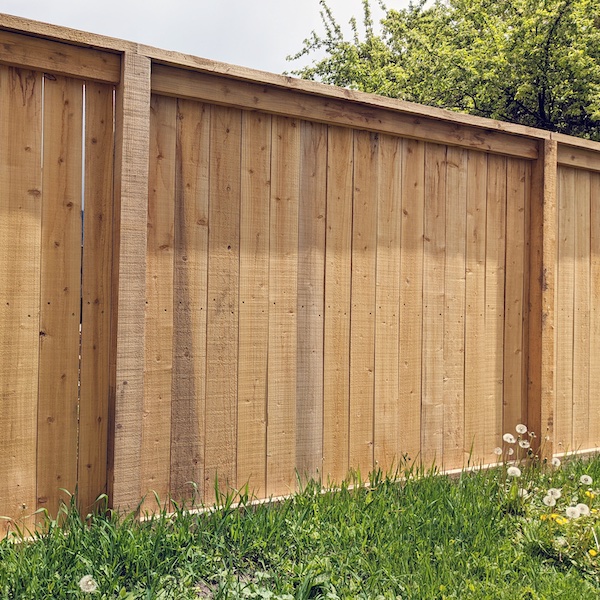All Categories
Featured
Prior to the installment process begins, it's important to appropriately prepare your residential property to make sure that whatever goes efficiently. Here's an overview on just how to prepare your home for fence setup.
Additionally, check for any type of below ground challenges like lawn sprinkler, irrigation pipes, or utility lines. You can generally contact your neighborhood energy company to mark the areas of these below ground attributes to stop unintended damages during setup. It's constantly best to make certain the ground is devoid of obstructions before the service provider begins digging.
![]()
![]()
Final thought. Preparing your residential property for fencing installation is a vital step in the procedure that can conserve you money, stress, and time. By recognizing regional laws, noting building lines, clearing the setup location, and interacting with your neighbors, you can guarantee a successful and smooth installation. Making the effort to prepare effectively will not only make the installment procedure less complicated however likewise lead to a lovely, sturdy fencing that boosts your building for several years to come.
- Inspect Neighborhood Rules and Permits. Prior to beginning the physical prep work, it's important to recognize the regional regulations surrounding fence setup. Each municipality may have different guidelines regarding fencing height, product, positioning, and whether a license is required. You may require to get an authorization prior to installation or verify with your Homeowners Organization (HOA) if you stay in a community with specific standards. Constantly research the zoning and permitting rules in your location to stay clear of fines or needing to redo your work.
- Mark Your Building Lines. Recognizing exactly where your property lines are is important to ensure the fencing is mounted correctly. You do not desire to unintentionally construct part of your fence on your next-door neighbor's land, as this can cause disagreements. Take into consideration hiring a specialist property surveyor to note them for you if you're not sure of your home lines. Several home owners erroneously assume the borders are where fences or landmarks already exist, but having an official study done can prevent expensive mistakes.
- Clear the Setup Location. Next, you require to prepare the location where the fencing will be mounted. These things can conflict with the fence installment process and may require added labor or devices to eliminate, which might boost expenses and time.
Additionally, check for any type of below ground challenges like lawn sprinkler, irrigation pipes, or utility lines. You can generally contact your neighborhood energy company to mark the areas of these below ground attributes to stop unintended damages during setup. It's constantly best to make certain the ground is devoid of obstructions before the service provider begins digging.

- Take Into Consideration Access for Setup Equipment. During the fencing installment process, heavy tools such as vehicles, messages, or diggers may require to access your building. Make sure that there is a accessible and clear course to your property for these vehicles to prevent any type of hold-ups. It's essential to review this with your specialist in advance so they can plan accordingly if you have a slim driveway or restricted gain access to. Clearing the path likewise helps to prevent damage to your yard, landscaping, or any frameworks near the installation location.
- Interact with Neighbors. It's well-mannered to educate your next-door neighbors about the job in advance if you're installing a fencing on or near the residential property line. While this is not legally called for in all situations, providing your next-door neighbors a heads-up can protect against misunderstandings and help keep great partnerships. Some neighbors may have worries concerning the fence elevation, style, or possible obstruction of sights, so it's essential to go over these information early in the process. Ask them to be mindful of your neighbor's building during installation. if you're working with a professional.
- Choose Your Fence Material and Style. Prior to installment starts, decide on the type of fence material and design you want. There are various options to pick from, including timber, vinyl, light weight aluminum, chain-link, and wrought iron, each with its disadvantages and pros. Consider your objectives for the fence-- whether it's privacy, safety and security, appearances, or low upkeep-- and exactly how each product matches your requirements. Additionally, make certain to connect your option with the specialist so they can prepare appropriately, guaranteeing they have all the required materials on hand for a smooth installment.

- Get ready for the Last Touches. As soon as the fencing is set up, you might require to deal with some last touches. These can include staining or repainting a timber fence, including message caps, or ensuring the gateways turn correctly. The setup team may require added time to make certain whatever lines up as planned if you've opted for a decorative or custom layout. Once the installation is full to make sure every little thing meets your assumptions., it's a great idea to inspect the fence.
Final thought. Preparing your residential property for fencing installation is a vital step in the procedure that can conserve you money, stress, and time. By recognizing regional laws, noting building lines, clearing the setup location, and interacting with your neighbors, you can guarantee a successful and smooth installation. Making the effort to prepare effectively will not only make the installment procedure less complicated however likewise lead to a lovely, sturdy fencing that boosts your building for several years to come.
Latest Posts
Picking the Right Roof Shade: Influence On Energy Performance
Published May 21, 25
1 min read
Check Out Brake Repair & More: Full Auto Care Solutions from Montclare Auto Repair
Published May 21, 25
1 min read
Searching for Budget-Friendly Oil Change Solutions in St. Louis? Car-X Delivers Quality Care
Published May 20, 25
1 min read
More
Latest Posts
Picking the Right Roof Shade: Influence On Energy Performance
Published May 21, 25
1 min read
Check Out Brake Repair & More: Full Auto Care Solutions from Montclare Auto Repair
Published May 21, 25
1 min read
Searching for Budget-Friendly Oil Change Solutions in St. Louis? Car-X Delivers Quality Care
Published May 20, 25
1 min read